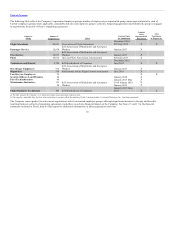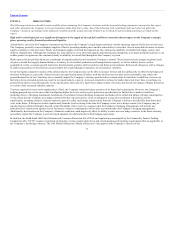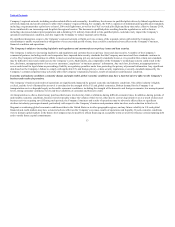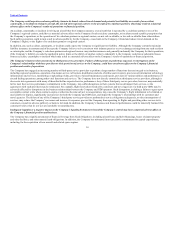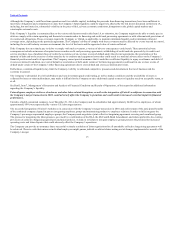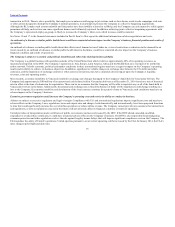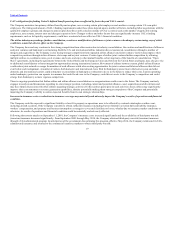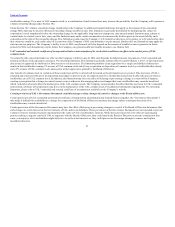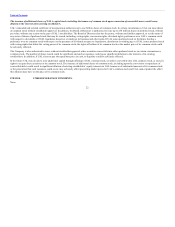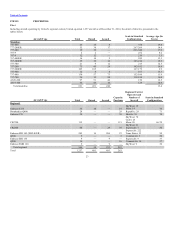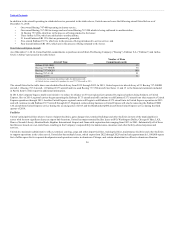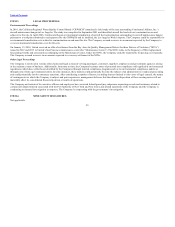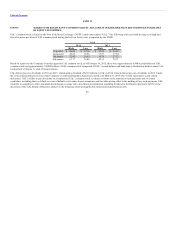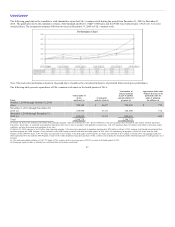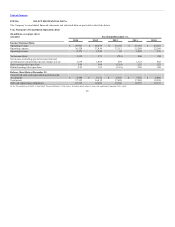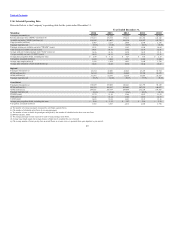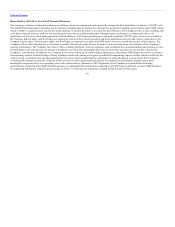United Airlines 2014 Annual Report Download - page 20
Download and view the complete annual report
Please find page 20 of the 2014 United Airlines annual report below. You can navigate through the pages in the report by either clicking on the pages listed below, or by using the keyword search tool below to find specific information within the annual report.
Table of Contents
(terrorism) insurance. The government subsequently discontinued the FAA-administered program in December 2014. If the Company is unable in the future
to obtain third-party war risk (terrorism) insurance with acceptable terms, or if the coverage obtained is insufficient relative to actual liability or losses that
the Company experiences, its results of operations and financial condition could be materially and adversely affected.
The Company’s results of operations fluctuate due to seasonality and other factors associated with the airline industry.
Due to greater demand for air travel during the spring and summer months, revenues in the airline industry in the second and third quarters of the year are
generally stronger than revenues in the first and fourth quarters of the year, which are periods of lower travel demand. The Company’s results of operations
generally reflect this seasonality, but have also been impacted by numerous other factors that are not necessarily seasonal including, among others, the
imposition of excise and similar taxes, extreme or severe weather, air traffic control congestion, geological events, natural disasters, changes in the
competitive environment due to industry consolidation, general economic conditions and other factors. As a result, the Company’s quarterly operating
results are not necessarily indicative of operating results for an entire year and historical operating results in a quarterly or annual period are not necessarily
indicative of future operating results.
The Company may never realize the full value of its intangible assets or its long-lived assets causing it to record impairments that may negatively affect its
financial position and results of operations.
In accordance with applicable accounting standards, the Company is required to test its indefinite-lived intangible assets for impairment on an annual basis
on October 1 of each year, or more frequently if conditions indicate that an impairment may have occurred. In addition, the Company is required to test
certain of its other assets for impairment if conditions indicate that an impairment may have occurred.
The Company may be required to recognize impairments in the future due to, among other factors, extreme fuel price volatility, tight credit markets, a decline
in the fair value of certain tangible or intangible assets, unfavorable trends in historical or forecasted results of operations and cash flows and an uncertain
economic environment, as well as other uncertainties. The Company can provide no assurance that a material impairment charge of tangible or intangible
assets will not occur in a future period. The value of the Company’s aircraft could be impacted in future periods by changes in supply and demand for these
aircraft. Such changes in supply and demand for certain aircraft types could result from grounding of aircraft by the Company or other carriers. An impairment
charge could have a material adverse effect on the Company’s financial position and results of operations.
The Company’s ability to use its net operating loss carryforwards to offset future taxable income for U.S. federal income tax purposes may be significantly
limited due to various circumstances, including certain possible future transactions involving the sale or issuance of UAL common stock, or if taxable
income does not reach sufficient levels.
As of December 31, 2014, UAL reported consolidated federal net operating loss (“NOL”) carryforwards of approximately $9.6 billion.
The Company’s ability to use its NOL carryforwards may be limited if it experiences an “ownership change” as defined in Section 382 (“Section 382”) of the
Internal Revenue Code of 1986, as amended. An ownership change generally occurs if certain stockholders increase their aggregate percentage ownership of
a corporation’s stock by more than 50 percentage points over their lowest percentage ownership at any time during the testing period, which is generally the
three-year period preceding any potential ownership change.
There is no assurance that the Company will not experience a future ownership change under Section 382 that may significantly limit or possibly eliminate
its ability to use its NOL carryforwards. Potential future transactions involving the sale or issuance of UAL common stock, including the exercise of
conversion options under the terms of any convertible debt that UAL may issue in the future, the repurchase of such debt with UAL common stock, any
issuance of UAL common stock for cash and the acquisition or disposition of such stock by a
20


